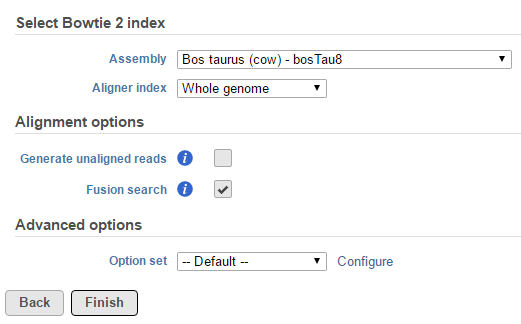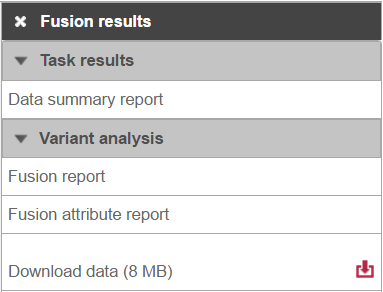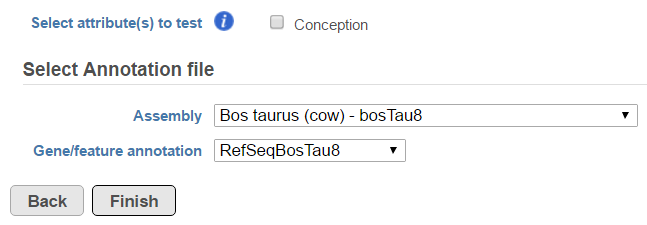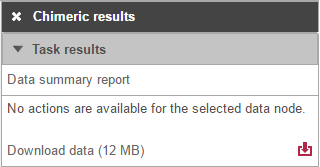A fusion gene is a hybrid gene that combines parts of two or more original genes. They can form as a result of chromosomal rearrangements (such as translocation, interstitial deletion, or chromosomal inversion) or abnormal transcription and have been shown to act as drivers of malignant transformation or/and progression in various neoplasms (1). The discovery and characterization of fusion genes hav been greatly facilitated by the use of NGS (2) and several computational algorithms have been developed to detect them.
This chapter covers will illustrate how to detect fusion genes by:
TopHat-Fusion Algorithm
General Overview
TopHat-Fusion is a version of TopHat with the ability to align reads across fusion points and detect fusion genes resulting from breakage and re-joining of two different chromosomes or from rearrangements within a chromosome (3). It is independent of gene annotation and can discover fusion products from known genes, unannotated splice variants of known genes or completely unknown genes.
The reads are first aligned to the genome and initially, unaligned reads are then split into multiple 25 bp sequences which are, in turn, aligned to the genome by Bowtie. TopHat-Fusion algorithm then identifies the cases where the first and the last 25 bp segment are aligned to either two different chromosomes or two locations on the same chromosome (spacing is defined by the user). The whole read is then used to identify a fusion point. After the initial fusion candidates are defined, all the segments from initially unaligned reads are realigned against the fusion points (as well as intron boundaries and indels) and the resulting alignments are combined to full read alignments.
The most up to date TopHat-Fusion version implemented in Partek Flow when the manual was written (2.1.0) focuses on fusions due to chromosomal rearrangements, while fusions resulting from read-through transcription or trans-splicing were not supported. TopHat-Fusion can handle both paired- and single-end reads, but the support of color-space reads is still pending. For details as well as discussion of TopHat-Fusion options, see TopHat-Fusion home page (4).
Running TopHat-Fusion within Partek Flow
TopHat-Fusion is integrated with TopHat 2 and fusion detection is activated by using the Fusion search check box in the TopHat 2 Alignment options dialog (Figure 1).
The output is dumped to the Fusion results (Figure 2), which is a part of TopHat 2 results (in addition to Aligned reads node and, optionally, Unaligned reads node).
Selecting the Fusion results node opens the toolbox, with four options (Figure 3): Data summary report, Fusion report, Fusion attribute report, and Download data.
Clicking on the Download data results in download of a .fusion file to the local computer. The file is human readable and can be opened in a text editor (example in Figure 4). For details refer to TopHat-Fusion documentation.
Fusion report provides an annotated report on detected fusion genes. For that purpose an annotation file needs to be specified first (Figure 5).
The result of annotation is the Fusion report task node as seen in Figure 6.
The list of annotated fusion genes, in a form of Fusion report (Figure 11), can be obtained by first selecting the Fusion report task node and then the Task report link from the toolbox. Each row of the table in Figure 7 is a potential fusion event, with the columns providing the following information.
- Sample ID: sample in which the fusion event was identified;
- Chromosome 1: chromosome hosting the first (left) segment of the fusion transcript;
- Stop 1: end of the first (left) segment of the fusion transcript;
- Chromosome 2: chromosome hosting the second (right) part of the fusion transcript;
- Start 2: beginning of the second (right) segment of the fusion transcript;
- Gene1: gene on the left side of the fusion;
- Gene2: gene on the right side of the fusion;
- Spanning reads: number of reads which were unaligned during the initial phase of TopHat and where only one mate is used as evidence of the fusion event;
- Mate Pairs: number of reads which were unaligned during the initial phase of TopHat and where both mates are used as evidence of the fusion event;
- Spanning mate pairs: number of reads where both mates were aligned during the initial phase of TopHat, but their pairing is discordant (e.g. different chromosomes, different orientation etc.);
- Contradicting reads: number of reads which do not support the fusion;
- Left bases: number of bases on the left side of the fusion;
- Right bases: number of bases on the right side of the fusion.
All the columns can be sorted by using the arrow buttons in column headers, while the type-in boxes can be used for searching. TopHat-Fusion does not report exact start and stop position for each side of the fusion event. It has a single location for the end of the upstream segment (Stop 1) and the beginning of the downstream segment (Start 2). Columns Start 1 and Stop 2 are added for (internal) consistency with other Partek Flow tools.
Checkboxes Disrupted Genes and Gene/Gene fusions are filter tools. When selected Disrupted Genes removes all the rows (fusion events) which have no gene assigned to it, i.e. which merge two intergenic regions. However, if there is a fusion between a gene and an intergenic region, it will be kept in the table. Gene/Gene fusions filters in only those fusion events which have an annotated gene on both sided of the breakpoint. In the other words, only gene to gene fusions are kept in the table.
Another table which can be generated based on a Fusion results node is Fusion attribute report (Figure 3). When the option is selected, it brings up the dialog shown in Figure 8. First, you need to specify one or more categorical attributes (Select attribute(s) to test), which have at least two categories (see Data tab). Second, you need to specify an annotation file, using the Assembly and Gene/feature annotation drop-down lists.
A new data node, Fusion attribute report, is generated in the Analysis tab (Figure 9) and it provides access to the Task report link in the toolbox.
The output, Fusion report table (Figure 10) resembles the basic TopHat-Fusion output (Figure 7); each row of the table is a single fusion event while the information on the merged segments is on the columns.
- Chromosome 1: chromosome hosting the first (left) segment of the fusion transcript;
- Start 1: beginning of the first (left) segment of the fusion transcript;
- Stop 1: end of the first (right) segment of the fusion transcript;
- Chromosome 2: chromosome hosting the second (right) segment of the fusion transcript;
- Start 2: beginning of the second (right) segment of the fusion transcript;
- Stop 2: end of the second (left) segment of the fusion transcript;
- Gene1: gene on the left side of the fusion;
- Gene2: gene on the right side of the fusion;
- % in (category name): fraction of samples within the category with the fusion event.
Checkboxes Disrupted Genes and Gene/Gene fusions are filter tools. When selected Disrupted Genes removes all the rows (fusion events) which have no gene assigned to it, i.e. which merge two intergenic regions. However, if there is a fusion between a gene and an intergenic region, it will be kept in the table. Gene/Gene fusions filters in only those fusion events which have an annotated gene on both sided of the breakpoint. In the other words, only gene to gene fusions are kept in the table.
STAR Algorithm
General Overview
STAR aligner also has the ability to detect fusion genes (referred to as “chimeric alignments”) (5). During the first phase of alignment, STAR searches for maximal mappable prefixes (seeds) of sequencing reads. In the second phase, all the seeds that align within user-defined genomic windows are stitched together. If an alignment within one genomic window does not cover the entire read sequence, STAR will try to find two or more windows that cover the entire read. This essentially results in detection of fusion events, with different parts of reads aligning to distal genomic locations, or different chromosomes, or different strands.
Running STAR Chimeric Alignment within Partek Flow
STAR fusion detection algorithm is integrated with STAR aligner and fusion detection is activated by tick-marking Chimeric alignment option in the Advanced options of the aligner (the Advanced options dialog is reached via Configure link in the setup dialog). As soon as the Chimeric alignment is selected, additional options, specific to the fusion search algorithm, are shown (Figure 15). For discussion on the options details, see STAR documentation.
The output is associated with the Chimeric results data node (Figure 16), which is a part of STAR results (in addition to Aligned reads node and, optionally, Unaligned reads node).
Selecting the Chimeric results node opens the toolbox (Figure 17) with two options: Data summary report or Download data.
Clicking on the Download data results in download of a .fusion file to the local computer. The file is human readible and can be opened in a text editor (example in Figure 18). For details refer to STAR's documentation.
References
- Annala MJ, Parker BC, Zhang W, Nykter M. Fusion genes and their discovery using high throughput sequencing. Cancer Lett. 2013;340:192-200.
- Costa V, Aprile M, Esposito R, Ciccodicola A. RNA-Seq and human complex diseases: recent accomplishments and future perspectives. Eur J Hum Genet. 2013;21:134-142.
- Kim D, Salzberg SL. TopHat-Fusion: an algorithm for discovery of novel fusion transcripts. Genome Biology. 2011;12:R72
- TopHat-Fusion. An algorithm for discovery of novel fusion transcripts. http:// http://tophat.cbcb.umd.edu/fusion_index.html Accessed on April 25, 2014
- Dobin A, Davies CA, Schlesinger F et al. STAR: ultrafast universal RNA-seq aligner. Bioinformatics. 2013;29:15-21.
Additional Assistance
If you need additional assistance, please visit our support page to submit a help ticket or find phone numbers for regional support.


| Your Rating: |
    
|
Results: |
    
|
3 | rates |












